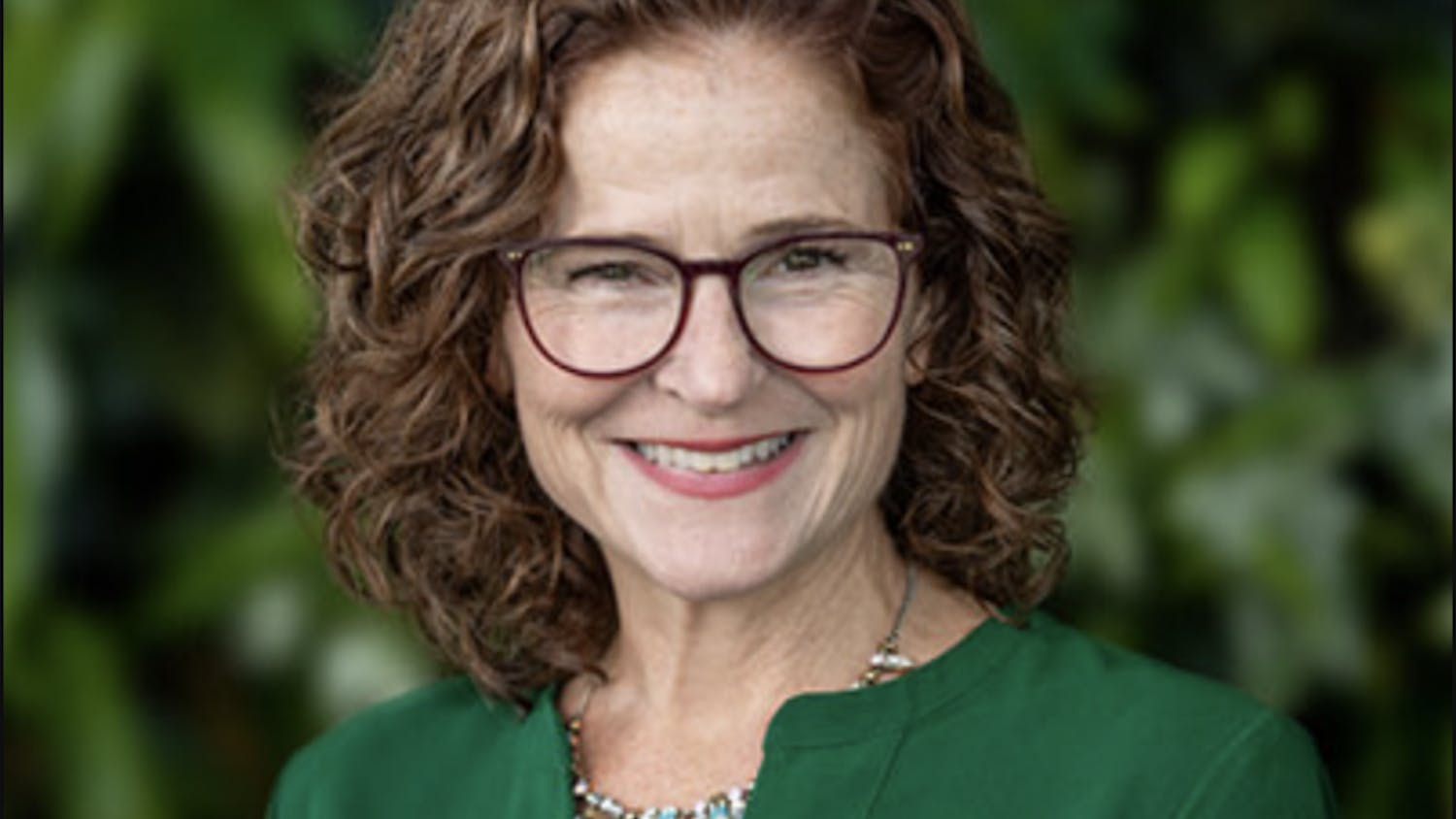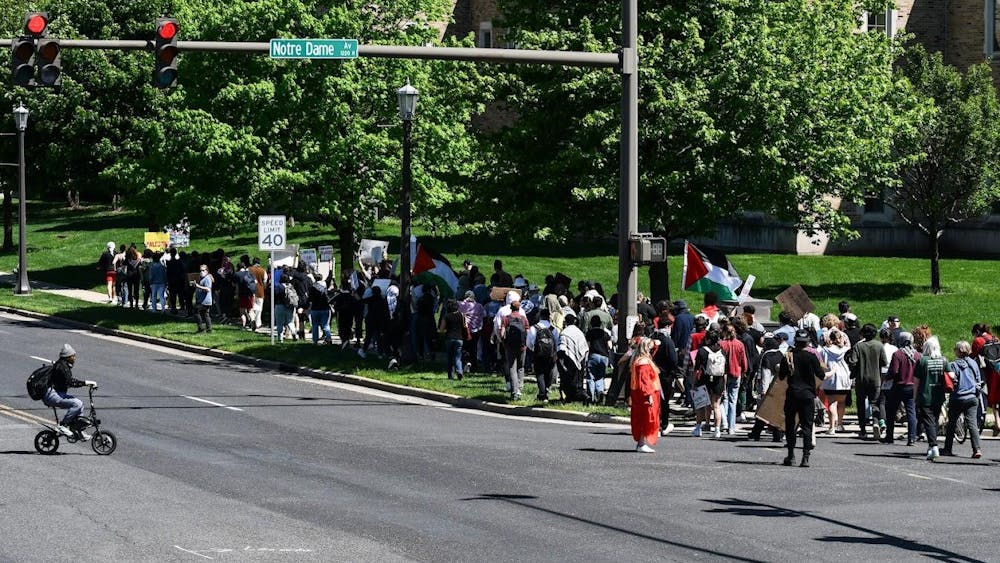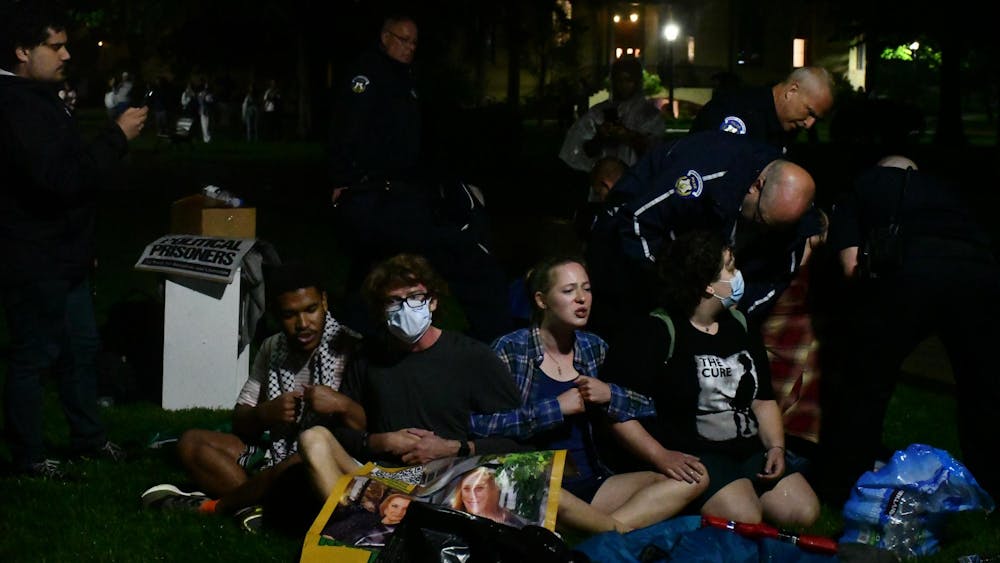It can be difficult to achieve and maintain piece in the aftermath of war and even more difficult to predict whether such effort will be successful at a given time and place. In an attempt to address the second problem, a panel of professors offered new ways of analyzing peace at a panel discussion Tuesday in the Hesburgh Center.
Caroline Hartzell, a political science professor from Gettysburg College, said the research the panelists presented offers important information that will influence the content of peace settlements.

"These studies seek to move beyond the focus on peace as the absence of war ... and beyond the duration of peace after war. ... This focus on what constitutes peace moves us beyond ... the focus by both scholars and policymakers on the 'best' way to end war," Hartzell said.
David Cortright, director of policy studies at the Kroc Institute, said instead of only considering negative peace, or the absence of conflict, people should consider more encompassing elements like economic opportunity, political representation and empowerment of women. He said instead of being dichotomous issues, the two concepts form a continuum and even rely on each other.
"In order to sustain a negative peace, you have to build a positive peace, and you have to include those elements that we usually link to social justice," Cortright said. "Over a period, it is necessary for conditions of positive peace to continually develop to maintain negative peace. ... The distinctions between the two types of peace begin to blur."
Cortright said his own two-year project researching peace will form the core of his upcoming book, "Governance and Peace." He said the overall global decline of violence sparked his interest in the topic.
"It grows, in part, out of the discussion that is so active today ... about the long-term trend in human affairs towards the global reduction in armed violence," Cortright said. "It's a trend that merits a lot of consideration."
Looking through the lens of governance, Cortright said societies with democratic traditions, higher per capita income and equality for women demonstrate more enhanced peace and are less likely to break into war.

"The building of sound, legitimate institutions and the implementation of transparency are ways of building peace," Cortright said. "Governance is ultimately about power, about who has it and who benefits from it."
In evaluating governance, Cortright said his research demonstrates good government institutions are inclusive, participatory and accountable.
"All [qualities] need to be present, all enhance each other," he said. "We need to understand these broad factors and understand that the process of building peace is multi-dimensional."
Peter Wallensteen, professor of peace studies at the Kroc Institute, researched violent conflicts, which can end in a peace agreement or in the victory of one side over the other. Instead of measuring the effectiveness of outcome simply in terms of negative peace, he said an interdisciplinary and nuanced approach is needed.
"We need to think about what is success or failure," Wallensteen said. "And quality is one way to think of it."
Wallensteen said his forthcoming publication, "Quality Peace," analyzes five dimensions of society with respect to outcomes of peace: civil society, post-war security, governance, economic reconstruction and reconciliation or transitional justice. He said the criteria of dignity, security and predictability were used to compare the effects of various victories and peace agreements.
Overall, Wallensteen said more democracy, more military integration and power-sharing, and more international engagement occur in peace agreement cases than in examples with a clear victory. Accordingly, in victory situations, "quality peace" cannot be established without extra commitment to dignity.
"You can imagine victories which produce quality peace, but it really requires particular efforts to do it," he said.
Wallensteen said his research suggests peace agreements are more likely to generate quality peace than victories in civil wars and state formation conflicts. These agreements should have provisions for the implementation of democracy, military integration and minority protections. He also said since the end of the Cold War, the world order has emphasized peace agreements and increased United Nations involvement, and this hegemonic environment affects peace on smaller scales.
"Yes, we have this broad perspective. This is part of the way we have to understand local solutions. This sort of relation will color relationships all the way through," Wallensteen said. "It sets the mark of how conflicts will be handled."
Despite the overall decline of violence globally, Cortright said there are currently 32 active conflicts, six of which are major wars.
Wallensteen said ongoing peace-studies research offers vital insight into situations of active conflict and into the means of improving conditions in seemingly peaceful societies.
"There is an aspiration in most societies to get away from violence. It is not a normal human condition," Wallensteen said. "People would like to live life in quality peace. This is something we can use."
Contact AbiHoverman at ahoverma@nd.edu












